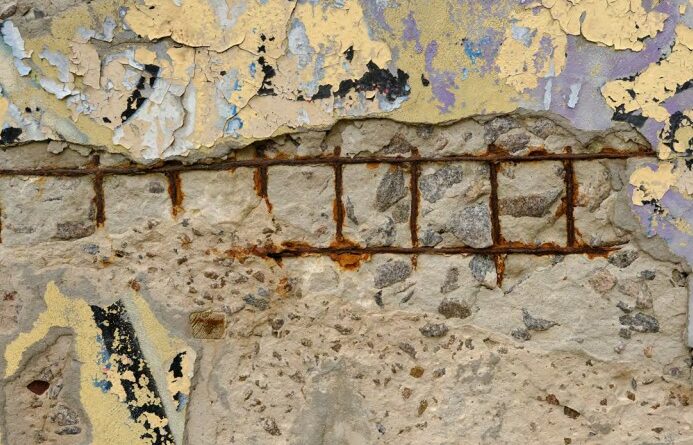Your policy might not cover loss caused by defective workmanship, materials, and design.
Claim for damage to retaining wall caused by the KZN flood
The claim
The insured’s wall collapsed as a result of the flood on 11 April 2022. The insured’s claim was rejected by the insurer on the ground that the policy does not cover loss caused by defective workmanship, materials, and design.
The insurer appointed a contractor who reported that the wall was a retaining wall. There were no weep holes in the wall which caused it to collapse. The contractor was of the view that the construction of the wall did not comply with South African National Building Standards (SANS) regulations, it was built incorrectly and was bound to fail.
The insured disputed the rejection. The insured provided photographs of the wall after the rubble had been cleared. The photographs showed that there were weep holes in the wall.
In response, the insurer’s contractor stated that the weep holes were insufficient for the size of the retaining wall. The insurer maintained its rejection of the claim
The insured challenges the insurer’s rejection
The insured appointed her own contractor who reported that the wall collapsed due to the excessive rainfall that KZN had experienced.
The contractor stated that the wall had agricultural pipes and weep holes and was built with cement blocks and English bond (a method of laying bricks or blocks). The contractor was of the opinion that the wall would have survived any normal rainfall, however, this storm was extraordinary.
The insured submitted that the wall was not retaining soil on the day of the flood and that concrete columns were going to be added to the wall. However, the columns could not be added due to the flood.
The insured argued that, even though the wall was not built to the engineer’s specifications, the torrential rains, exacerbated by mudslides and the sheer force of the water from the flood, caused the wall to collapse. The insured stated that the wall was constructed in line with recommendations that an engineer would have made. The insured argued further that, even if the wall had been built according to an engineer’s specification, given the force of the floods, the wall may still have collapsed.
The insurer’s response
The insurer appointed an internal loss adjuster to assess the damage. The loss adjuster found that the wall was 400mm thick and 2.2m in height. The wall had no piers. According to SANS10400, a 390/400mm thick wall should be no more than between 1.4m and 1.5m high if there are no piers. At the time of the loss adjuster’s inspection, piers were being added to the section of the wall that had not collapsed and the weep holes were only on the bottom section of the retaining wall.
According to the insured, there was brick force only in the bottom section of the wall, the foundation size was adequate and there were expansion joints at 3m intervals.
According to the loss adjuster, there were sub-soil perforated drainage pipes in the wall, however, the pipes were not wrapped in geo fabric or were not embedded in aggregate stone which would have made them more effective in raining water.
The loss adjuster noted that the retaining wall was not designed by an engineer. The wall was under-designed and did not comply with the SANS regulations.
Based on the loss adjuster’s report, the insurer stated that the wall failed because it was not built to an engineer’s specifications and did not comply with the building standards. The insurer maintained its rejection of the claim.
OSTI’s findings
OSTI provisionally upheld the insurer’s rejection of the claim and stated that it was common cause that the wall was not designed to engineering specifications which caused the loss
The policy contained a provision that excluded liability for damage caused by defective design and construction.
The insured disagreed with OSTI’s findings and requested that further consideration be given to the matter. The insured reiterated that the flood destroyed homes, washed away roads and triggered mudslides in the area. The insured reasserted that, while the wall was not built to engineering specifications, it was built according to standard building practice with the required weep holes, agricultural drainage pipes, etc.
The insured stated that it was a freestanding wall that was 30 meters long, and approximately 15 meters of the wall had collapsed. This, according to the insured, showed that the wall was not
retaining any soil at the time of the flood, but was impacted by the severity of mudslides and the sheer force of the flood water.
OSTI noted that the wall was described as a retaining wall by the insured’s contractor, the insurer’s contractor and the loss adjuster.
It was also common cause that the retaining wall was not built to an engineer’s specifications.
The insured did not provide any evidence to dispute the finding that the wall did not comply with the SANS regulations. OSTI mentioned to the insured that she could not be an expert in her own matter.
Notwithstanding, OSTI recognised that concurrent causes had operated to cause the loss, being the flood and the defective design of the retaining wall. In light of this, OSTI requested the insurer to consider settling 50% of the cost of repairing the wall.
The insurer agreed to abide by OSTI’s decision and offered to settle 50% of the repair costs.




